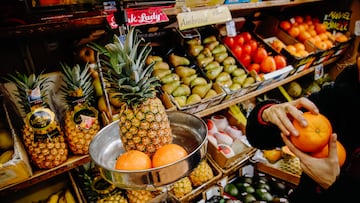Two of the most eaten fruits hide a serious danger: it’s to do with absorption
Tiny plastic particles are now present in fruit, air, soil, water, and even in the human body, sparking urgent calls for global action.

In recent years, microplastics have become one of the world’s biggest environmental challenges. These are small plastic particles – less than five millimeters – that are found almost everywhere: oceans, rivers, soil, food, air, and even inside the human body. Although nearly invisible to the naked eye, they affect not only the environment but also public health, biodiversity, and food security.
Why are there microplastics in our food?
Microplastics come from many sources. Some are manufactured at that size, such as microbeads in cosmetics and hygiene products, while others form through the breakdown of larger plastics like bags, packaging, synthetic clothing, and tires. Once released into the environment, they are virtually impossible to remove, as plastic does not biodegrade easily. In oceans, for example, fish, shellfish, and seabirds ingest them, introducing the particles into the food chain and eventually into humans.
Recent studies have detected microplastics in the blood, lungs, and even the placenta, raising concern about their long-term impact on health. They also reach fruit, as shown by a 2021 study published in Environmental Research, which found that plants absorb the particles through their roots and transfer them to their fruits.
Which fruits are the most contaminated?
According to that study, two of the world’s most widely consumed fruits carry particularly high levels of microplastics. A gram of apple contains more than 195,500 plastic particles, while a pear contains around 189,500 particles per gram.
Addressing this crisis requires a comprehensive approach. It means drastically reducing single-use plastics, improving waste management systems, promoting innovation in biodegradable materials, and raising public awareness about the impact of excessive plastic consumption. Stricter global policies are also needed to regulate both the production and treatment of plastics.
Related stories
Get your game on! Whether you’re into NFL touchdowns, NBA buzzer-beaters, world-class soccer goals, or MLB home runs, our app has it all.
Dive into live coverage, expert insights, breaking news, exclusive videos, and more – plus, stay updated on the latest in current affairs and entertainment. Download now for all-access coverage, right at your fingertips – anytime, anywhere.
Complete your personal details to comment